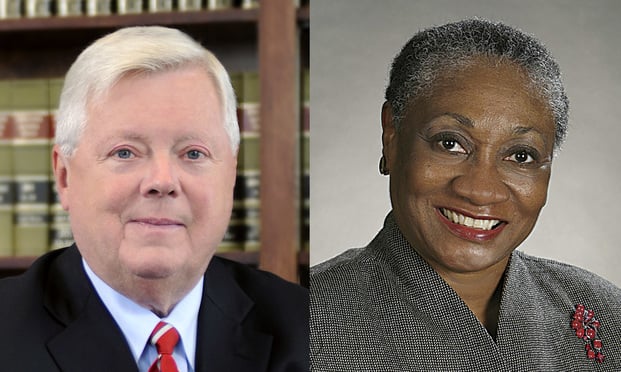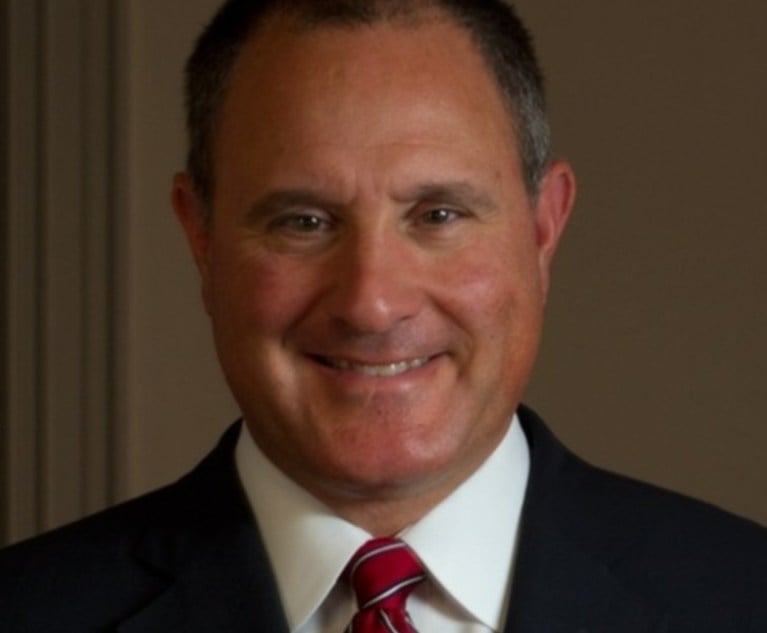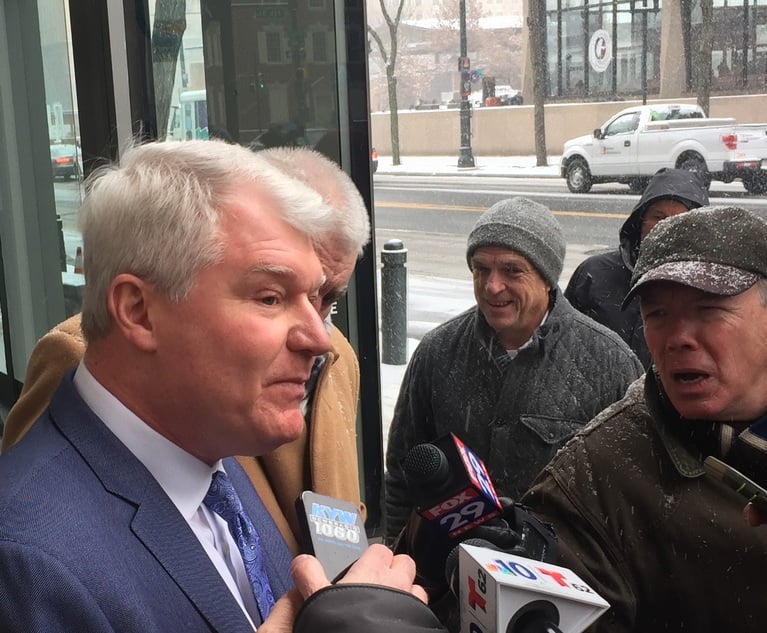Pennsylvania’s Chief Justice Thomas Saylor has confirmed that a disciplinary inquiry is underway stemming from allegations that he interfered with disciplinary proceedings against the state’s second Black female justice and made discriminatory comments about her as well.
A spokeswoman for the Administrative Office of Pennsylvania Courts said Saylor was notified Wednesday morning that a disciplinary investigation is underway.
“Today, the chief justice received an informal letter of inquiry to which he will respond in due course,” Stacey Witalec said in an email.
Although many in the Pennsylvania legal community have defended Saylor since the allegations emerged last month, the allegations have also raised concerns about racial bias in the court system. Others have also speculated about the motivations behind them surfacing.
The allegations stem from an affidavit that former Justice Cynthia Baldwin made public soon after she was reprimanded by the Disciplinary Board of Pennsylvania over how she represented three former university employees during the grand jury investigation into serial child molester Jerry Sandusky. The document, first reported on by The Legal, quickly made news across Pennsylvania.
In a recent interview with The Legal, Baldwin also said she had been aware of a disciplinary complaint having been filed against the chief justice over the allegations. However, she said she had not filed the complaint.
The affidavit, which former grand jury Supervising Judge Barry Feudale signed last year, states that, during a bench-bar conference in 2012, Saylor approached Feudale and told him that a lawyer’s disciplinary complaint was forthcoming against Baldwin. According to the document, Saylor added that Feudale, who presided over the grand jury investigating Sandusky, should “assist in every way with providing information in support of the disciplinary investigation.” Feudale’s affidavit also alleged that Saylor said the discipline was necessary because Baldwin “caused us a lot of trouble when she was on the Supreme Court with her minority agenda.”
While some court watchers have said the recent allegations against Saylor could be an attempt by Baldwin to “throw cold water” on the disciplinary process after her reprimand, others say the allegations raise serious questions about grand jury secrecy and racial bias in the judicial system, and deserve to be fully investigated.
It has also left some wondering whether the normal confidentiality that comes into play should be waived given the publicity the issue has already received and the nature of the allegations that are out there.
“Once it’s out there and leaked in some ways, it doesn’t do the chief any good keeping it half under wraps,” Charles Geyh, a professor at Indiana University’s Maurer School of Law, said, noting that having these allegations allows for significant speculation. ”Once partial disclosure is already out there in part, the racial dimension makes it all the more important that we get to the bottom in as forthright a way as we can.”
Questions Linger
Feudale’s allegations are the latest wrinkle in the saga of litigation related to the Sandusky scandal, which, along with resulting in Baldwin being disciplined, also resulted in one of the lead prosecutors, Frank Fina, facing disciplinary action, as well as millions of dollars being fought over in insurance and defamation disputes. A review of the Sandusky investigation also led former Attorney General Kathleen Kane to make public numerous pornographic and, in some cases, racist emails sent between several prosecutors and members of the judiciary. Those revelations eventually led to former Supreme Court Justices J. Michael Eakin and Seamus McCaffery leaving the bench.
A common suggestion among several ethics attorneys has been that Baldwin’s decision to surface the allegations against Saylor might have been an attempt by the former justice to undermine the reprimand she received last month. However, Baldwin dismisses those claims.
Speaking with The Legal, Baldwin said she did not receive the affidavit until her disciplinary case was before the Supreme Court. At that point, her lawyers sought Saylor’s recusal, which he eventually did. Baldwin reiterated that she is not the one making the allegations against Saylor, but rather, the allegations are coming from a sworn statement by Feudale. But she said, given the nature of the alleged conduct, she felt it was important to make the allegations public.
“I went through the whole thing, and when it was over, I still had the affidavit. I said to myself, if you are not part of the solution, you’re part of the problem,” she said. “If people don’t know these allegations exist, and you don’t make it public, then you’re part of the problem.”
In the weeks following Feudale’s affidavit becoming public, both Saylor and Feudale have had their defenders.
Kleinbard attorney Shohin H. Vance, who formerly clerked with Saylor, penned a piece for The Legal supporting the chief justice, saying he had “never heard, seen, or even suspected any hint of racial bias from” Saylor.
Others also questioned the allegations.
“Having served on both the Judicial Conduct Board and the Court of Judicial Discipline, I have never had, even in the most sensitive of matters, the slightest hint of interference,” ethics attorney John Morris of Kaufman, Coren & Ress said. “I find it very unlikely that there was any in this case.”
Along with questioning Baldwin’s motives, some attorneys also questioned the source of the allegations, noting Feudale had presided over hearings that led not only to disciplinary proceedings against both Baldwin and Fina but also caused several charges to be dropped against three former Penn State administrators implicated in the scandal. They also noted that in 2013, then Attorney General Kane asked the state Supreme Court to stop Feudale from serving as the presiding grand jury judge after he allegedly showed a knife to one of her secretaries.
Others, however, said that they do not have any reason to disbelieve Feudale, and think the allegations must be vetted.
“Feudale has always been straight with me and honest,” said ethics attorney Sam Stretton, who represented Feudale regarding his ultimately failed efforts to be appointed a senior judge. “Obviously it should be looked at. Any time there’s allegations of ex parte contact, or discriminatory conduct, it should be looked at.”
After the affidavit became public, The Inquirer reported that Stacey Witalec, a spokeswoman for the Supreme Court, confirmed that a meeting took place between Saylor and Feudale in 2012, and that Saylor asked Feudale about legal work being done in connection to the Sandusky scandal. She told The Inquirer the questioning was done “entirely appropriately.”
However, former Chief Justice Ronald Castille, who served as a witness in Fina’s disciplinary proceedings and disagreed that any charges should have been brought against the two, also said, at least when it comes to the grand jury process, Saylor’s alleged conduct seems improper. According to Castille, whenever supervising grand jury judges have issues they are supposed to reach out to the chief justice. In 2012, Saylor was an associate justice, while Castille was serving as chief.
“Other justices should not be advocating, or even talking about these cases with the grand jury judges,” Castille said. “There’s a pipeline through the chief justice’s office.”
Still, Castille also said the allegations seemed “out of character” for Saylor, whom Castille said was a “good justice” and “straightforward.” He also said he never had any impression that there were tensions between Saylor and Baldwin during her tenure on the court.
Baldwin also said she also did not think there were any problems between her and Saylor before she saw the affidavit.
Reading the document, she said, was shocking.
“I didn’t know of any tensions with the chief justice,” she said. “To me, we were all amicable colleagues. I was shocked. But then after I got over the shock, I was saddened and upset.”
Baldwin said she did not file a complaint to the JCB, but has been made aware that one was filed. Baldwin, who has repeatedly questioned the disciplinary proceedings against her, she said she would like the JCB to do a full investigation, and that the public should be told about the proceedings.
“We want people to have faith in the judiciary, to know if you come before them, you are going to get a fair hearing, a fair hearing where nobody is bringing bias, or vindictiveness that prejudices anything,” she said. “There should be a full investigation, and the public should be told.”
Confidential Investigations
Baldwin said a complaint has been filed against Saylor stemming from Feudale’s affidavit. Feudale did not respond to multiple attempts to contact him.
According to ethics attorneys, confidentiality is an important factor in these investigations. The vast majority of complaints—often more than 90%—are found to be groundless, court watchers said. Most times the complaints come from disgruntled litigants with the adverse ruling making up the substance of the complaint. Because these groundless allegations can be damaging to both the judge and the process, confidentiality is important to maintain, court watchers said.
And in many instances the judges themselves are not made aware of the investigations until the process has been finalized.
According to JCB Chief Counsel Richard Long, once a complaint has been lodged, there is no obligation for the board to notify a judge that he or she is he subject of an investigation. Depending on how the investigation unfolds, sometimes subjects are given a letter of inquiry asking the judges to respond to certain allegations, other times they learn they are being investigated when they receive a subpoena compelling them to be deposed. Before any charges are filed, the board is constitutionally required to give the judges an opportunity to respond before the charges are filed, however, in many cases, the investigation subjects are simply given a letter notifying them that a complaint was made but ultimately dismissed.
“They don’t necessarily get information about the nature of the allegations,” Long said.
However, the disciplinary rules also allow judges and justices to waive the confidentiality of the proceedings against them. According to Long, although those being investigated are encouraged to keep the proceedings secret, they are not bound by the confidentiality requirements that binds the board. Those being investigated, he said, can agree to waive the confidentiality. Still, it is up to the board to determine whether it wants to make certain disclosures public.
In many instances, such as the one facing Saylor, regardless of the disclosure by the board, allegations can become public, and that, according to some court watchers, can impact the public’s confidence in the court, especially when racially charged allegations are being lodged at a time when many Americans are beginning to more closely examine issues of systemic racism.
“Strategically, [saying] ‘let’s just have a piece of [it] out there and let’s keep it secret otherwise,’ seems like a counter-productive way to proceed when so much is already in the public domain,” Geyh said. ”You add that racial dimension to an already serious situation, and you have the potential for a very serious problem with a lot turning on facts we don’t have a command of yet.”
Long, speaking generally, said that, regardless of the public awareness of any allegations, the board’s focus is on investigating the claims.
“People have the freedom to pretty much say what they want to say. That’s an aspect of the American way of life,” he said. “I don’t think we spend a lot of energy wringing our hands over it. We make sure that we scrupulously adhere to our confidentiality requirements and encourage those we deal with to maintain confidentiality because we think it’s an aid to helping the board determine what happened.”
NOT FOR REPRINT
© 2024 ALM Global, LLC, All Rights Reserved. Request academic re-use from www.copyright.com. All other uses, submit a request to [email protected]. For more information visit Asset & Logo Licensing.


 Thomas Saylor, left, and Cynthia Baldwin, right. Courtesy photos
Thomas Saylor, left, and Cynthia Baldwin, right. Courtesy photos







